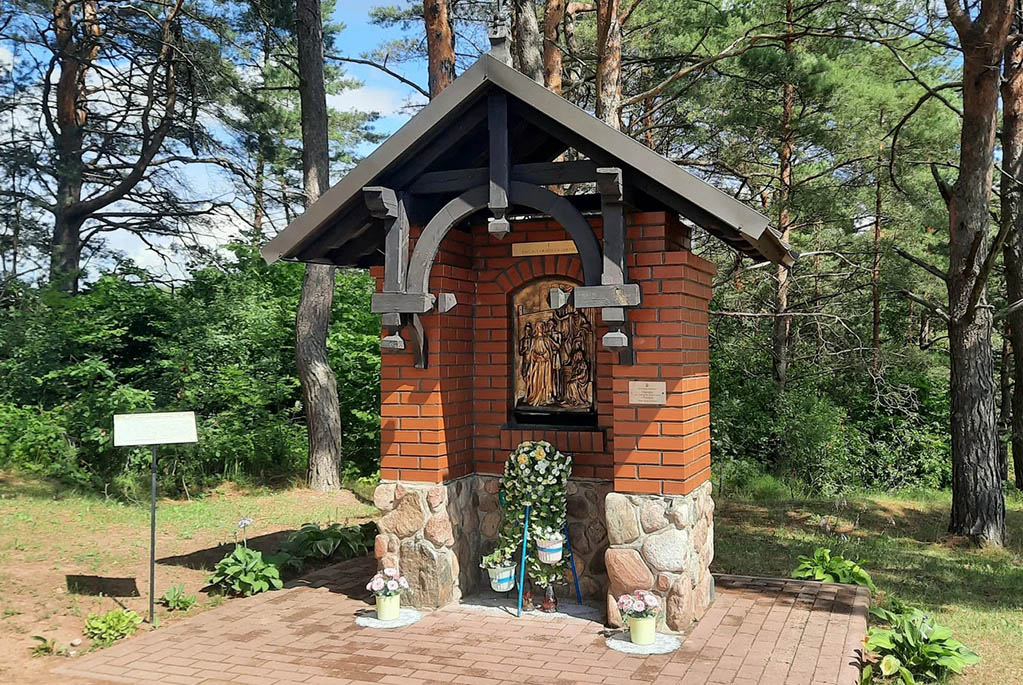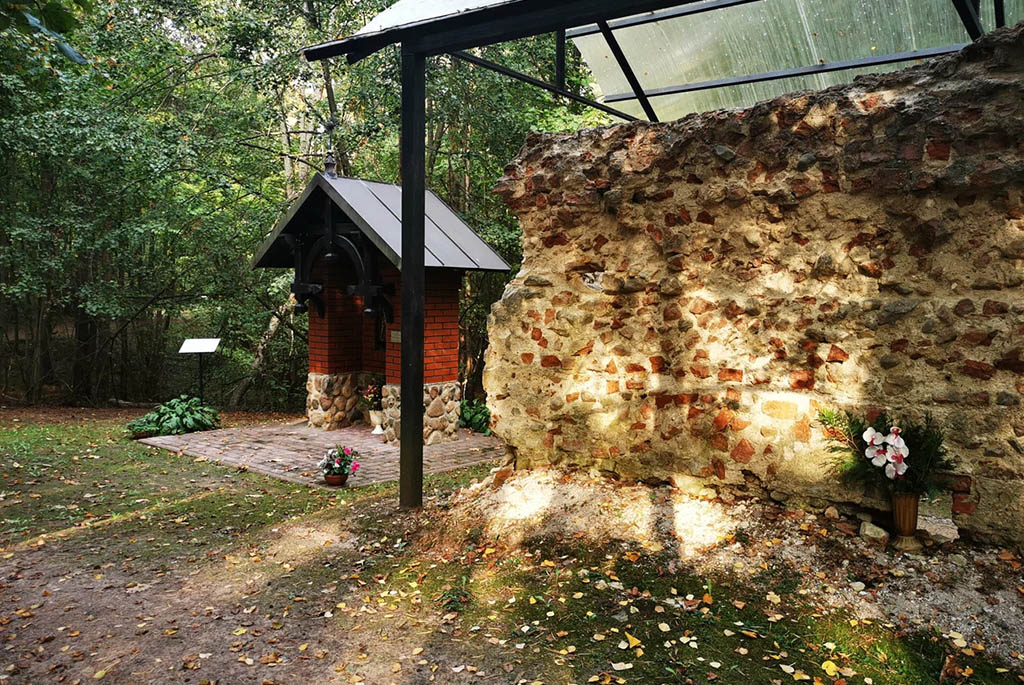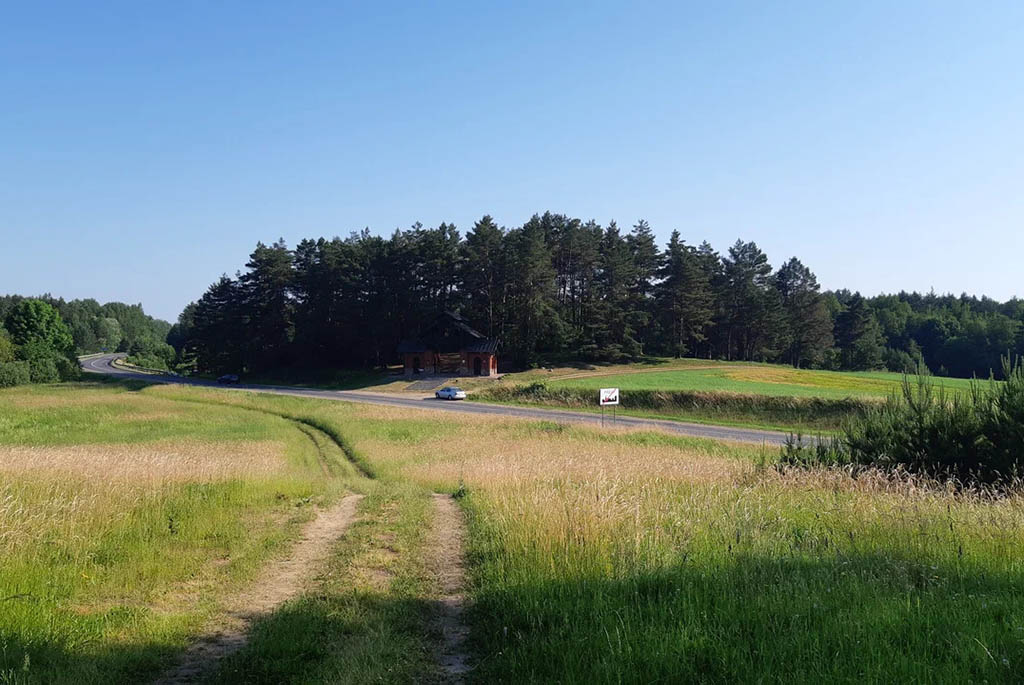The word "calvary" itself comes from the Latin name for Golgotha - Calvaria. Since the end of the 15th century, a type of cult architectural construction dedicated to the way of the Cross of Jesus Christ spread throughout Europe. It represented a symbolic path, retracing the path of the Son of God to Golgotha. Along the road, small chapels were constructed, reflecting biblical stories about the Savior’s sufferings during the Stations of the Cross. Calvaries were usually located outside the city, on hilly elevations.
The history of Calvary in Miadziel dates back to the 18th century. According to legend, the place for the construction of the shrine was shown in a dream to the local magnate Antonius Koshyts by the Virgin Mary herself. It is said that after Koshyts' long-awaited son drowned in a lake due to a nanny's negligence, the magnate ordered the unfortunate woman to be walled up in a pillar. The Virgin Mary appeared to the man in dreams to indicate a path for the redemption of sins.
The initiative to build the calvary was supported by the Myadel Catholic clergy. The sanctuary was erected with the efforts of monks from the local Carmelite monastery. The architectural complex included 8 arch gates and 21 wooden chapels on a stone foundation. The chapels housed icons and wooden sculptures dedicated to the Stations of the Cross of Jesus Christ. The length of the road was 2 kilometers. In the 18th-19th centuries, religious pilgrims flocked to Myadel to retrace the path of Christ. In the second half of the 19th century, the architectural complex was transferred to the Orthodox Church.
Calvary in Myadel in the 20th-21st Centuries
In the 1940s, the Calvary in Myadel was destroyed. The war, as well as the Soviet authorities' negative attitude towards religion, contributed to the shrine's destruction. By the beginning of the 21st century, only the remnants of 18 chapels had survived.
In 2014, the Myadel attraction was reconstructed. Now the architectural complex includes 14 restored chapels and gates, into which two stones are embedded—one from the Carmelite monastery in Haifa, Israel, and the other from a Catholic monastic complex near Krakow. Each chapel depicts the stages of Christ's ascent to Golgotha: condemnation to death, acceptance of the cross, the first fall of the Savior, meeting with the Mother of God, and others. The route also includes the surviving fragments of the foundations and walls of the 18th-century chapels. The path is crowned by the Mount of Three Crosses.
Calvary in Myadel is among the top ten most famous such structures in Europe. Not only religious pilgrims but also tourists interested in culture, architecture, and history of our country come to walk the symbolic path of Christ.
The city of Myadel is located 130 kilometers from Minsk. Buses and minibusses run from the capital to the district center. The path to the Myadel Golgotha begins at the Gates of Forgiveness, located at the exit of the city towards Postavy. Here, a map of the route is also installed. Part of the path goes through forest trails, and at the final destination—on the Mount of Three Crosses—travelers are greeted with a picturesque view of the Naroch and Myastro lakes.






